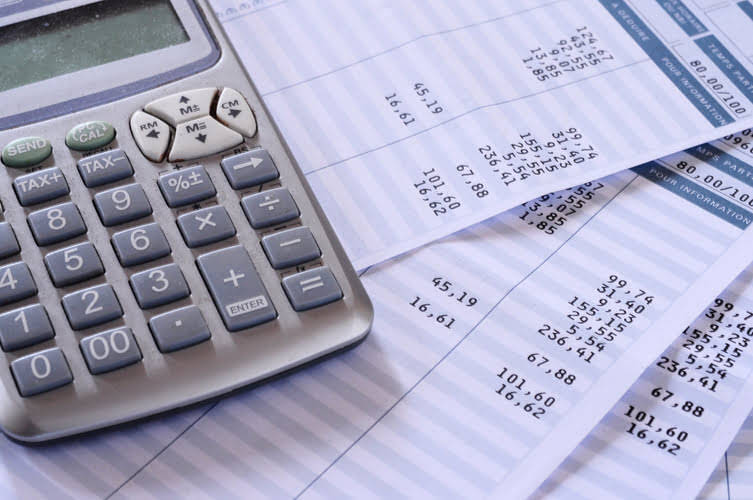
On a bank statement, an outstanding check means the check amount has been deducted from your account balance but the bank has not processed it yet. You can also consider digital money transfers to avoid the issue of paper checks entirely. Tools like digital banking apps, online money transfers, and direct deposits offer instant, effortless transactions in real-time. Businesses rely on precise cash flow projections for investments, expenses, and operational strategies. An uncashed check can distort these projections, causing businesses to misjudge their financial position.
- From the payee’s perspective, outstanding checks may have implications related to financial reporting and cash flow management.
- If the funds have not been withdrawn or cashed by the payee, the company’s bank account will be overstated and have a larger balance than the general ledger entry.
- When Sarah receives her bank statement, it shows a balance of $5,000, but her accounting records indicate a balance of $4,200, taking into account the outstanding rent check.
- However, by the end of the month, the landlord still needs to deposit the check.
- After recording the journal entries for the company’s book adjustments, a bank reconciliation statement should be produced to reflect all the changes to cash balances for each month.
- In this context, an outstanding check need not be outstanding for long; it may simply be the short period of time between when a check is mailed and when it is received.
- When it comes to managing business accounts, keeping track of checks that are outstanding is crucial.
BAR CPA Practice Questions: Share-Based Payment Arrangements Classified as Equity
- When a company receives its bank statement, the balance may not match the company’s records due to checks that have not yet cleared.
- This requires a reconciliation statement that identifies all outstanding checks and other items such as bank fees or errors.
- Sometime such checks are not honored because the person issuing the check does not have sufficient funds in his account.
- Understanding the consequences of having outstanding checks can be significant for businesses in various ways.
- Mr. X did not present or deposit that check in his account before the end of January.
Any checks present in your internal register but absent from the bank statement are considered outstanding. It is important to meticulously verify the Oil And Gas Accounting check numbers and amounts for each transaction to ensure accuracy. Checks that have been voided or stopped payment on should also be accounted for; while they reduce your book balance, they will not clear the bank and should be noted separately to avoid confusion.

Strategies to Mitigate Impact

Understanding an outstanding check is one that has been issued but not yet reported on a bank statement. how to find outstanding checks on bank reconciliation is essential for maintaining accurate financial records. By taking these steps, they can streamline the transaction process, reduce the likelihood of errors, and safeguard their financial interests. Accountants then compare each transaction in the company’s ledger with the bank statement, flagging discrepancies for investigation.
- With banking activity becoming increasingly electronic, another way to avoid writing a check and forgetting about it is to use the checking account’s online bill pay service.
- Hence, the company’s general ledger Cash account will not require an adjustment for the unpresented or outstanding check when it is reported on the balance sheet.
- Financial institutions also face liabilities related to outstanding checks.
- These checks can pose risks such as overdrawing the account, potential fraud, accounting discrepancies, and delayed financial reporting.
- Discover how to accurately identify and manage outstanding checks to achieve precise bank reconciliation and maintain clear financial records.
Step 4 – Find and deduct debit memorandum from your accounting record:
- This adjustment makes sure both records align and that your cash position reflects the funds available to your business.
- Setting Up Overdraft ProtectionIf you do have an occasional check that goes unclaimed, setting up overdraft protection can prevent unexpected NSF fees.
- This can cause discrepancies between the bank statement and the company’s books, requiring adjustments during the bank reconciliation process.
- Maintaining a financial buffer safeguards against liquidity shortages, ensuring businesses can meet unexpected expenses.
Last, outstanding checks might have an impact on management of the cash flow. This process involves aligning your bank statement with your records to ensure accuracy. Meanwhile, you must keep enough money in your account to cover the check when it is finally deposited.

Addressing these discrepancies is essential to ensure accurate financial statements. In conclusion, outstanding checks can pose risks to your financial stability if not properly managed. Stay proactive in tracking and reconciling your accounts, communicate with recipients, and leverage the benefits of online banking tools. With these measures in place, you’ll be better equipped to navigate the complex world of outstanding checks and keep your finances in order. This adjustment is an important step in arriving at the “adjusted bank balance,” which represents the true amount of funds available in the account. The goal of bank reconciliation is for this adjusted bank balance to match the adjusted cash balance in your internal accounting records.
Q: Why should I monitor my outstanding checks?
For instance, if a business writes a check to a supplier but the supplier doesn’t deposit the check immediately, this check is considered petty cash outstanding. The issuer has accounted for the reduction in their bank account balance, but the actual decrease will not occur until the recipient cashes the check and the bank clears it. Find all checks that you have issued but have not been presented for payment. You can do so by comparing the checks issued in your accounting record with the checks honored as per your bank statement. If your accounting record shows that a check has been issued and your bank statement does not show a corresponding entry for that check, it means that it is an outstanding or unpresented check.